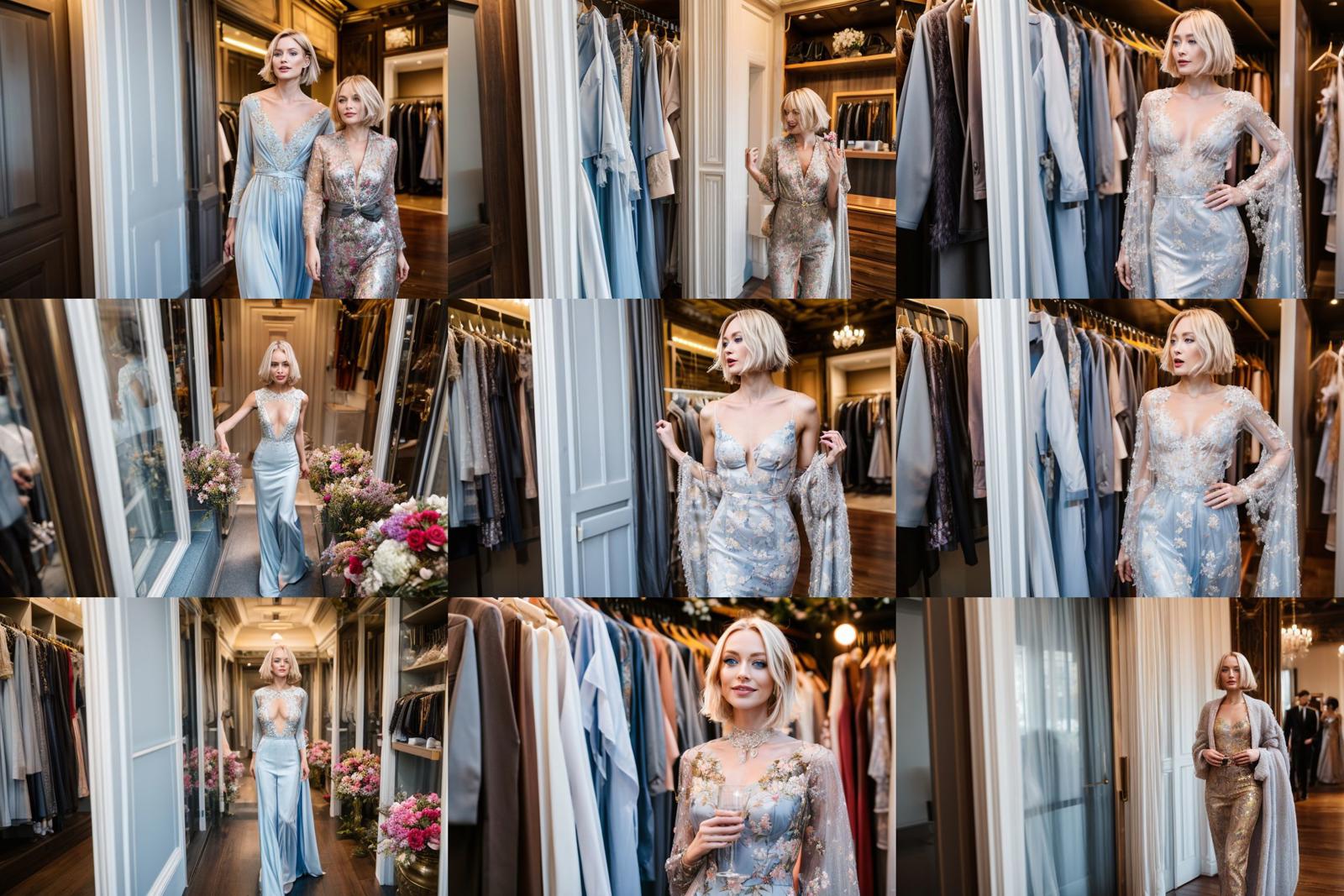How to Generate a Single Photoshoot Scene from Multiple Angles with a Stable Subject in Automatic1111
Creating a consistent scene across multiple angles in AI-generated imagery can be challenging, especially when aiming for a stable subject and environment. This guide walks through a streamlined method using Automatic1111’s WebUI, leveraging combinatorial generation , fixed seeds, dynamic prompts, and LoRAs to achieve professional photoshoot-style results.
Prerequisites
Automatic1111 WebUI installed (with the Dynamic Prompts extension enabled).
A LoRA (Low-Rank Adaptation) model trained for subject/scene consistency (e.g., a character-specific or style-specific LoRA).
Basic familiarity with prompt engineering and batch processing.
Step-by-Step Workflow
1. Set a Fixed Seed & Scene Anchor
Why a Fixed Seed? A fixed seed ensures the base noise pattern remains consistent across all generated images, stabilizing the subject and environment.
In the Dynamic Prompts tab:
Enable Fixed Seed (under "Advanced" settings).
Anchor the Scene in the Prompt:
Start your prompt with unchanging details to lock the subject, location, and style. For example:Copy
A young woman with curly red hair, standing in a futuristic cityscape, wearing a neon-lit jacket, <lora:affelejFT15c:0.9> affelejftc, 1girl, realistic, hetero, 1boy, intricate details, 8kReplace <lora:affelejFT15c:0.9> with your LoRA trigger.
2. Use a LoRA for Subject Consistency
LoRAs trained on specific subjects or styles help maintain coherence across angles.
Add the LoRA trigger to your prompt (e.g., <lora:affelejFT15c:0.9>).
Adjust the LoRA weight (e.g.,
:0.8) if needed to balance influence.
3. Add Dynamic Shot Types via Wildcards
Insert a wildcard or piped syntax at the end of your prompt to vary camera angles:
Copy
{wide angle|POV|close-up|overhead shot|low angle}, cinematic lightingThis generates one unique shot type per batch image.
4. Configure Combinatorial generation
In the Batch Count/Batch Size settings:
Set Batch Size to the number of shot types (e.g.,
5for the example above).If using multiple LoRAs, use Batch count instead as we cant have multiple lora in one batch.
Enable Combinatorial generation and set max generations (Dynamic Prompts extension) to iterate through all shot types.
5. Generate and Refine
Click Generate and review the output.
Ensure the subject, clothing, and background remain stable.
Troubleshoot inconsistencies by:
Increasing the LoRA weight.
Simplifying the scene description.
Adjusting the CFG scale (7–12 recommended).
Example Workflow
Prompt:
Copy
__spps_dcl__,
22 year old, {supermodel, very skinny, petite,|||} {__breastsize__, __jumbo/appearance/haircolour__ __hair-female__, {__jumbo/people/nationalities/europe__ real world location | caucasian}, {__skin-color__ skin|||}, __eyecolor__ eyes, fair skinned, | hair, breasts, eyes,} best quality , RAW photo, subject, 8k uhd, high quality, photorealistic, { {__luxury__ |}, __luxury__ , {__sarahpeterson/scene_fashion__,||||} skinned male,
{__detail__ , |} <lora:add_detail:1>, |||} __luxury__, {__sarahpeterson/*__,||||} __sarahpeterson/scene_mansion__, __jumbo/medium/photography/*__, __sarahpeterson/shot/*__, Settings:
Seed: Fixed in dynamic prompts.
Batch Count:
4(matching the four shot types).Combinatorial generation
Combinatorial batches:
1Max generation :
4(set to batch count).Sampler: DPM++ 2M Karras.
Steps: 30.
Tips for Success
Use High-Quality LoRAs: Train or download LoRAs specifically designed for consistency.
Balance Specificity: Avoid overloading the prompt; keep scene details concise but vivid.
Test Seeds: Experiment with different seeds to find one that aligns with your vision.
Common Pitfalls
Inconsistent Subjects: Fix the seed and increase LoRA weight if features drift.
Overcomplicated Prompts: Too many variables can destabilize the scene.
By combining fixed seeds, LoRAs, and dynamic shot types, you can generate cohesive multi-angle scenes perfect for storytelling, concept art, or virtual photoshoots. Experiment with different prompts and LoRAs to refine your results!
